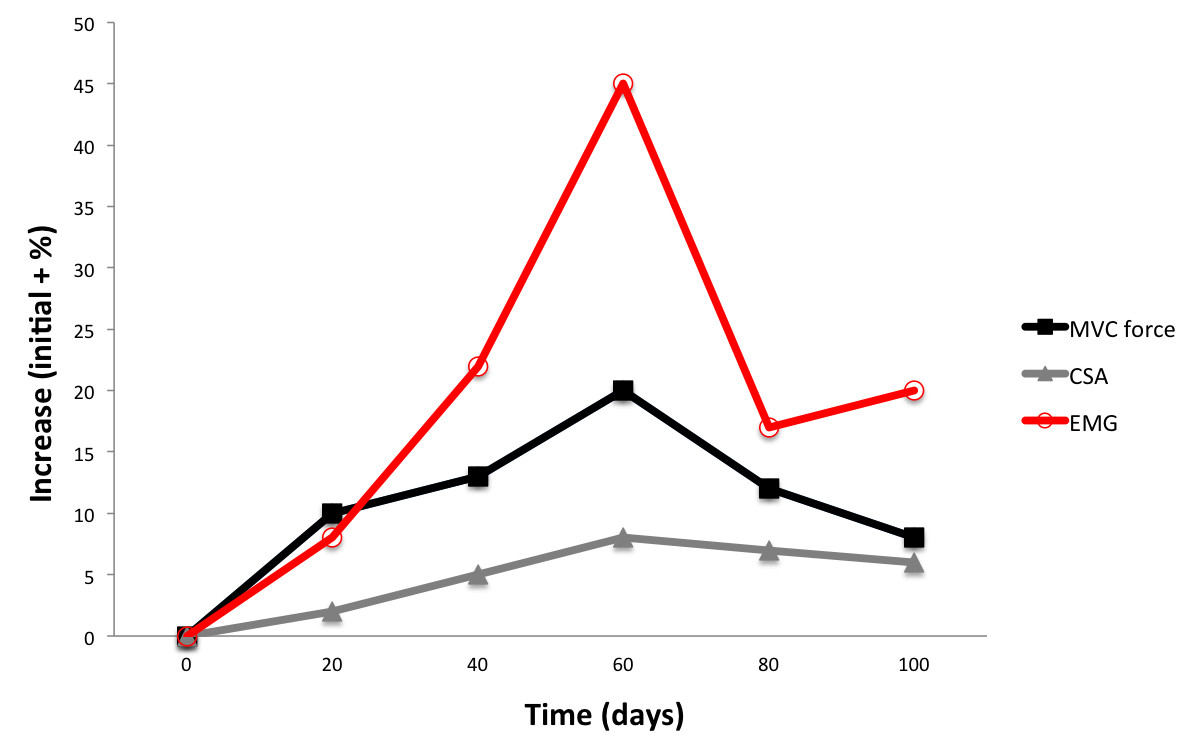Frequency power spectrum based sEMG signal analysis used by Mpower enables the detection of useful information
An abundance of beneficial information can be identified from sEMG signal with appropriate frequency analysis
1. Muscle cell type composition and cell size
2. Increasing fast muscle cell activation with faster movements
3. Increasing activation rate of the muscle cells when producing more power
4. Fatigue as a shift of frequency spectrum towards lower frequencies
5. Metabolic changes within the muscle visible in the spectrum
Look for the references >
Referencesclose
o Brody, L. R., et al. (1991). "pH-induced effects on median frequency and conduction velocity of the myoelectric signal." J Appl Physiol (1985) 71(5): 1878-1885.
o Kupa, E. J., et al. (1995). "Effects of Muscle-Fiber Type and Size on Emg Median Frequency and Conduction-Velocity." Journal of Applied Physiology 79(1): 23-32.
o O'Brien, P. R. and J. R. Potvin (1997). "Fatigue-related EMG responses of trunk muscles to a prolonged, isometric twist exertion." Clin Biomech (Bristol, Avon) 12(5): 306-313.
o Potvin, J. R. and L. R. Bent (1997). "A validation of techniques using surface EMG signals from dynamic contractions to quantify muscle fatigue during repetitive tasks." J Electromyogr Kinesiol 7(2): 131-139.
o Wakeling, J. M., et al. (2006). "Muscle fibre recruitment can respond to the mechanics of the muscle contraction." Journal of the Royal Society Interface 3(9): 533-544.
o Contessa, P., et al. (2009). "Motor unit control and force fluctuation during fatigue." J Appl Physiol (1985) 107(1): 235-243.
o De Luca, C. J. and E. C. Hostage (2010). "Relationship Between Firing Rate and Recruitment Threshold of Motoneurons in Voluntary Isometric Contractions." Journal of Neurophysiology 104(2): 1034-1046.
o Gonzalez-Izal, M., et al. (2010). "EMG spectral indices and muscle power fatigue during dynamic contractions." J Electromyogr Kinesiol 20(2): 233-240.
o De Luca, C. J. and P. Contessa (2012). "Hierarchical control of motor units in voluntary contractions." Journal of Neurophysiology 107(1): 178-195.
o Contessa, P. and C. J. De Luca (2013). "Neural control of muscle force: indications from a simulation model." Journal of Neurophysiology 109(6): 1548-



